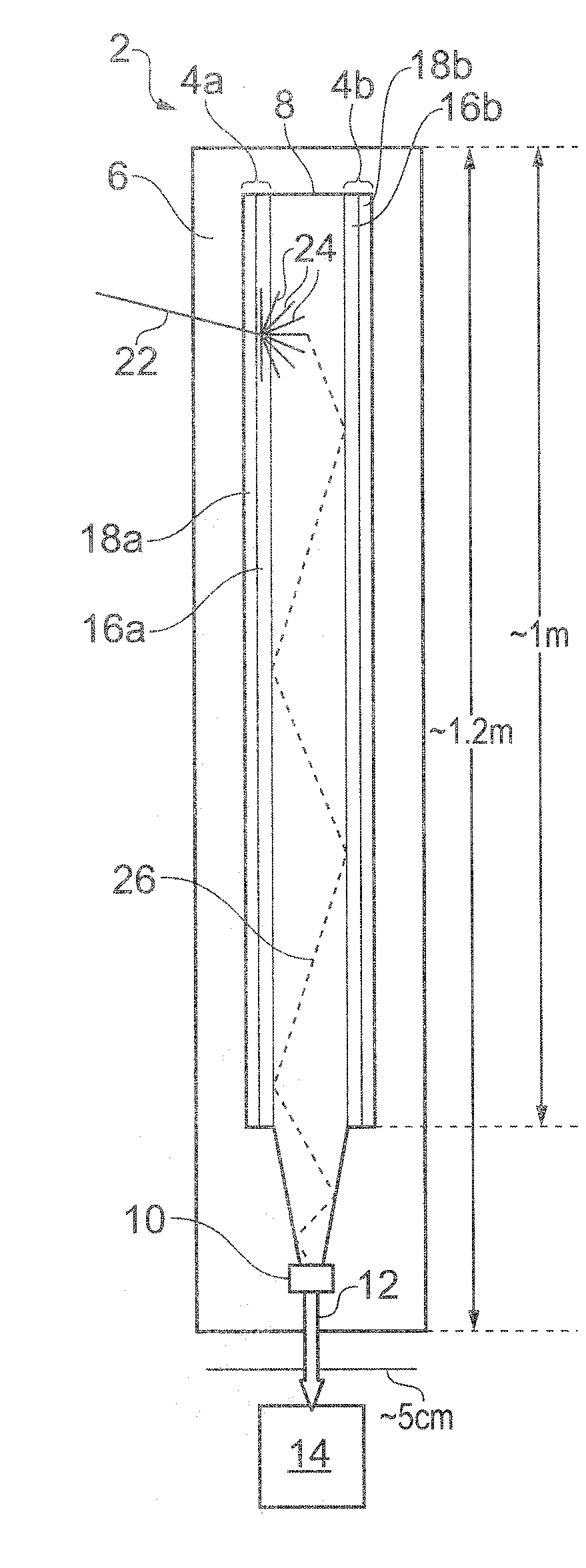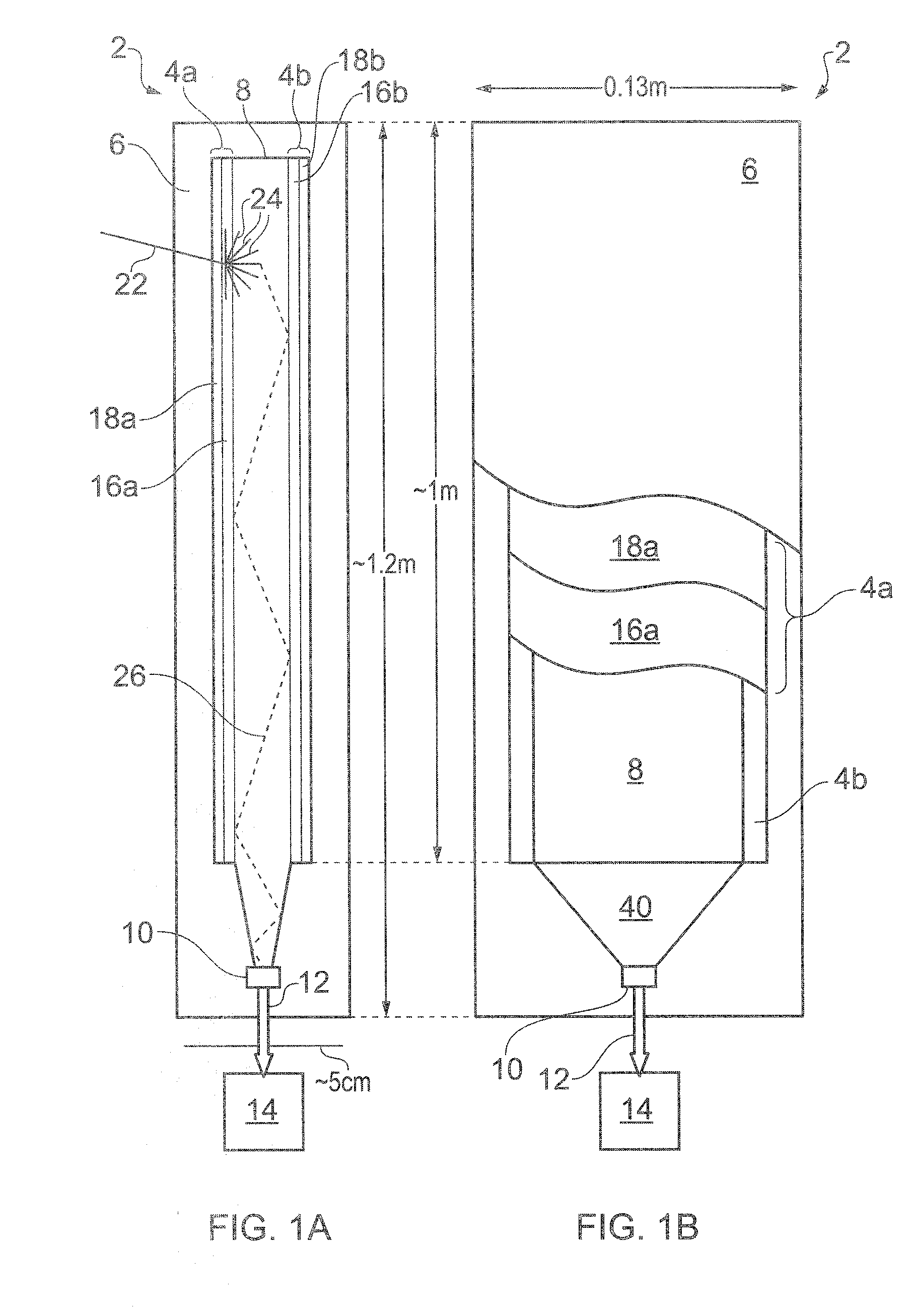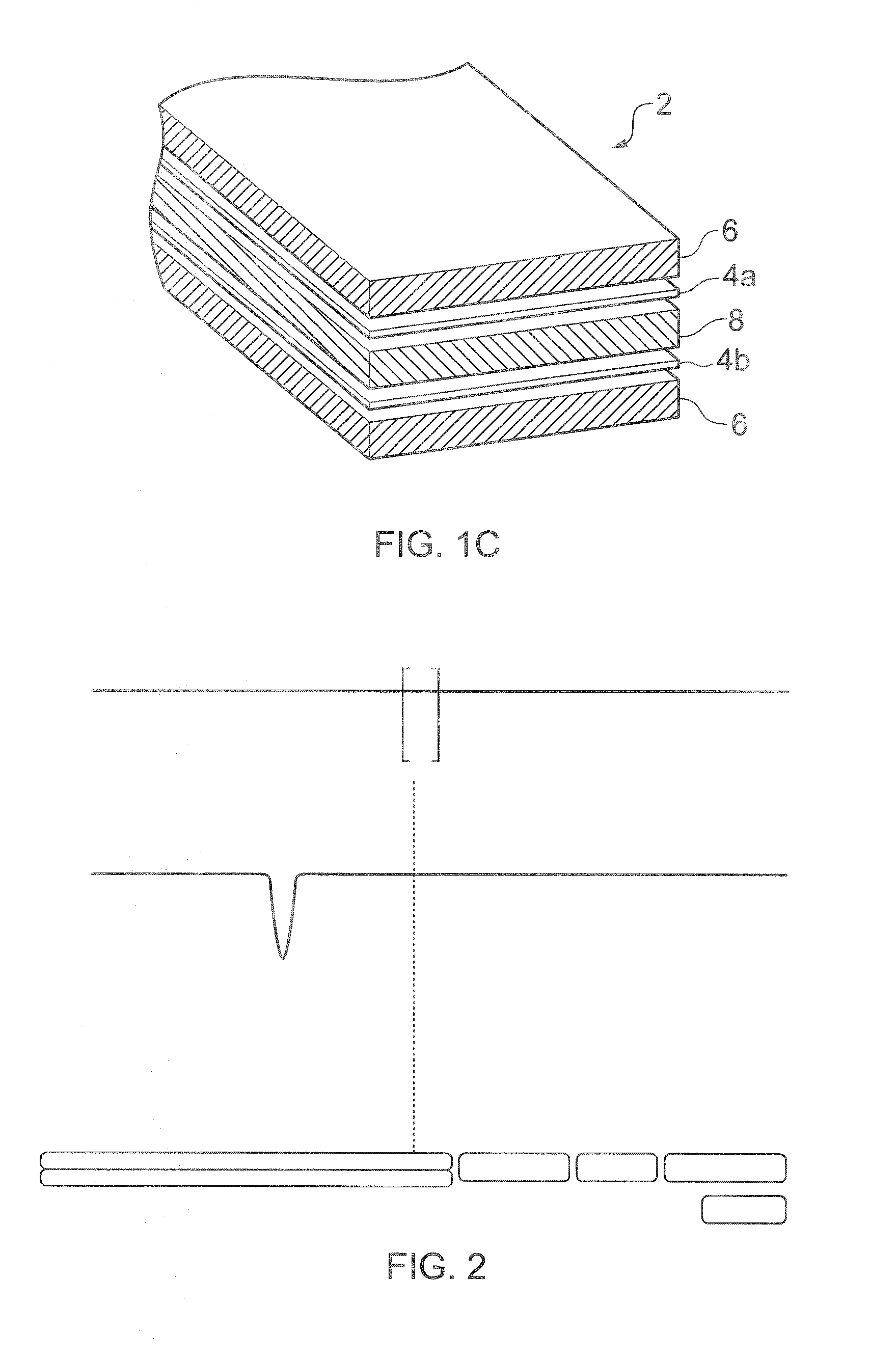Radiation detector
a detector and radiation technology, applied in the field of radiation detectors, can solve the problems of increasing the cost of lithium glass, increasing the cost of lithium iodide, and the scintillation efficiency of lithium glass is not as high as that of lithium iodide, and achieve the effect of detecting incident neutrons more efficiently
- Summary
- Abstract
- Description
- Claims
- Application Information
AI Technical Summary
Benefits of technology
Problems solved by technology
Method used
Image
Examples
Embodiment Construction
[0048]FIGS. 1A, 1B and 1C schematically show a neutron detector 2 according to an embodiment of the invention in respective side, face and perspective views. The neutron detector 2 has a generally layered structure and is shown in FIGS. 1B and 1C in partial cut-away to reveal features of the different layers. The face view of FIG. 1B is from the left-hand side of the detector as shown in FIG. 1A, although this is not overly significant since in this example embodiment the detector is in any case symmetric about the plane of the drawing of FIG. 1B. Various layers of the detector 2 and schematically shown separated form one another in FIG. 1C for ease of representation. In practice the different layers will be directly adjacent one another.
[0049]The neutron detector comprises a pair of neutron absorbing conversion screens 4a, 4b arranged on either side of a wavelength-shifting light-guide 8 in the form of a plastic scintillator plank. The light-guide 8 is coupled to a photodetector 10...
PUM
 Login to View More
Login to View More Abstract
Description
Claims
Application Information
 Login to View More
Login to View More - R&D
- Intellectual Property
- Life Sciences
- Materials
- Tech Scout
- Unparalleled Data Quality
- Higher Quality Content
- 60% Fewer Hallucinations
Browse by: Latest US Patents, China's latest patents, Technical Efficacy Thesaurus, Application Domain, Technology Topic, Popular Technical Reports.
© 2025 PatSnap. All rights reserved.Legal|Privacy policy|Modern Slavery Act Transparency Statement|Sitemap|About US| Contact US: help@patsnap.com



